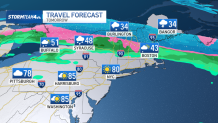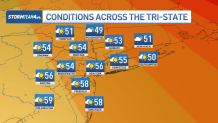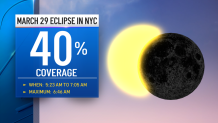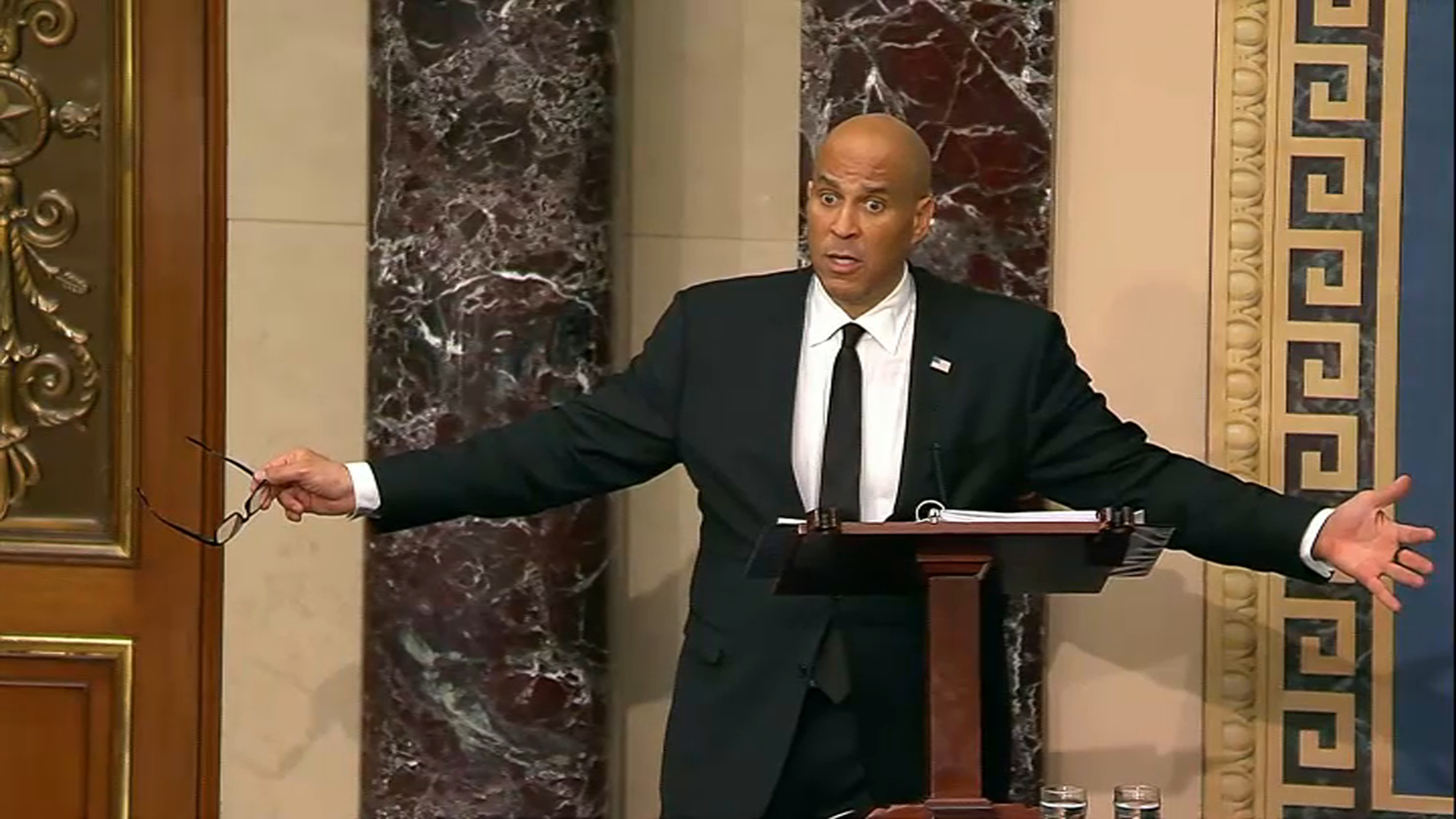What to Know
- Around NYC, the eclipse will begin at 5:23 a.m., peak at 6:46 a.m. and end at 7:05 a.m. However, sunrise is not until 6:44 a.m., meaning anything prior to that time will not be visible regardless. So you've got like 20 minutes of viewability
- Buildings and trees will easily obstruct your view; so if you want to see it, you’ll need to be situated somewhere with an unobstructed view of the eastern horizon
- If you miss this one, you’ll have to wait until 2028 before there’s another partial solar eclipse over the United States. And if you’re holding out for a total solar eclipse, you’re going to have to wait until 2045
If the cloudy forecast from the lunar eclipse two weeks ago left you yearning for another astronomical spectacle, you’re in luck.
The Northeast will be treated to a partial solar eclipse Saturday morning. But you’ll have to wake up pretty early if you want to catch it.
Watch NBC 4 free wherever you are
As opposed to a total solar eclipse, during which the moon completely obscures the sun, a partial eclipse is one in which the moon only covers part of the sun.
During a partial eclipse, you never get the moment of totality when the sky goes dark, and you can remove the eclipse glasses to view the corona of the sun. Instead, you observe a crescent-shaped sun that is only partially obscured. How much of the sun is obscured from your vantage point depends on your location.
Get Tri-state area news delivered to your inbox with NBC New York's News Headlines newsletter.

Most of us across the Northeast will be able to observe some level of coverage. Maine fairs the best, where about 80% of the sun will be obscured; New York City maxes out around 40%.

But amount of coverage is irrelevant if sky conditions don’t cooperate. And unfortunately, the farther north and east you go, where coverage is greater, the worse the visibility will be.
A stationary front sitting over the Northeast this weekend will bring clouds and rain to those north of I-90, making any attempt at viewing the eclipse futile. In these regions, all you’ll see are clouds, raindrops, and snowflakes.

Visibility will be better in the tri-state, since we are positioned south of the front, where skies will be partly cloudy. This positioning is also good news when it comes to temperatures and viewing comfort.
The tri-state is firmly on the warm side of the front, meaning temperatures will be quite mild for an early morning in March: mid to upper 50s. You’ll need a light jacket, not a parka. This is especially true since you won’t be outside for long anyway.

The real caveat when it comes to viewing this partial solar eclipse is the timing of it.
Around New York City, the eclipse will begin at 5:23 a.m., peak at 6:46 a.m. and end at 7:05 a.m. However, sunrise is not until 6:44 a.m., meaning anything prior to that time will not be visible regardless of sky conditions because the sun will still be below the horizon. That leaves roughly a 20-minute window where you’ll actually be able to observe the partial eclipse.

Furthermore, because the partial eclipse is taking place at sunrise, the sun is going to be very close to the horizon the entire time. Buildings and trees will easily obstruct your view; so if you want to see it, you’ll need to be situated somewhere with an unobstructed view of the eastern horizon. That means being in an open field or a high-rise building.
Local
If you manage to wake up in time and have a good view, it is certainly worth getting a glimpse of this eclipse. Just make sure to use your eclipse glasses. You cannot safely observe it directly without them.
If you miss this one, you’ll have to wait until 2028 before there’s another partial solar eclipse over the United States. And if you’re holding out for a total solar eclipse, you’re going to have to wait until 2045!



